Top-10 eCommerce Analytics Tools
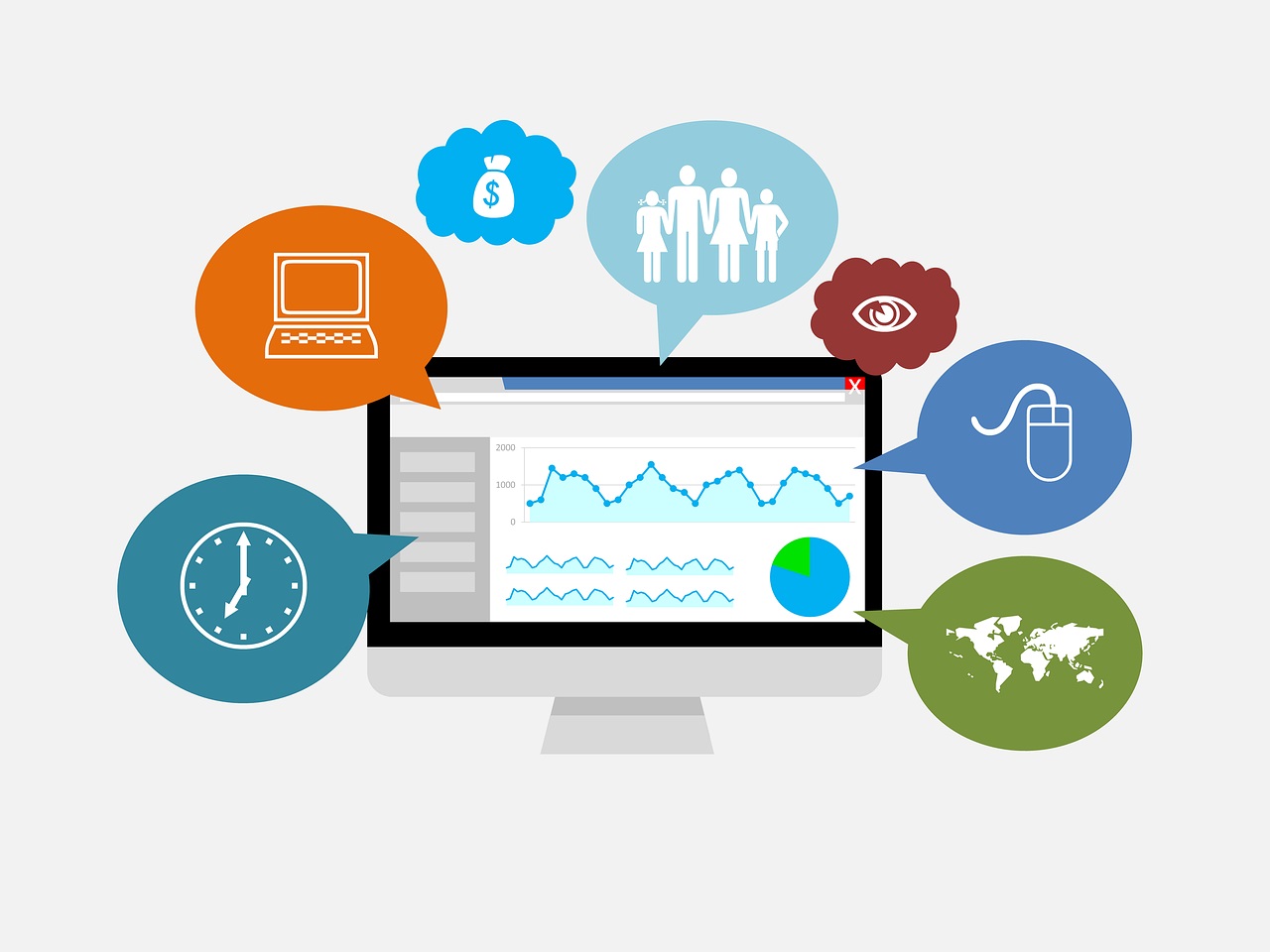
In the realm of online shopping, data plays a vital role in achieving success and outpacing competitors. However, the massive amount of data produced by eCommerce websites can be daunting. To make sense of it all, businesses can employ specialized analytics tools that are tailored for eCommerce. These tools extract valuable insights from the extensive data, empowering companies to make informed decisions.
How Can eCommerce Analytics Tools Help Your Business?
Performance Monitoring
eCommerce analytics tools allow businesses to monitor their online stores' performance. From tracking website traffic and visitor behavior to monitoring sales and conversion rates, these tools provide valuable insights into how the business is performing and help to identify growth opportunities.
Customer Behavior Analysis
Understanding customer behavior is crucial for eCommerce success. Analytics tools allow businesses to analyze customer journeys, identify browsing patterns, and track purchase behavior. This information helps optimize product offerings, personalize marketing campaigns, and improve customer experience.
Conversion Rate Optimization
Businesses can use eCommerce analytics tools to analyze the conversion funnel and identify obstacles that prevent conversions. Key metrics like bounce rates, cart abandonment rates, and checkout process performance can be tracked to optimize websites and streamline the purchase process, leading to higher conversions.
Marketing Campaign Effectiveness
Analytics tools provide insights into the performance of marketing campaigns. Businesses can track the effectiveness of different channels, measure campaign ROI, and identify which marketing efforts drive the highest conversions. This data helps optimize marketing strategies, allocate resources effectively, and maximize the return on investment.
Product Performance Analysis
eCommerce analytics tools allow businesses to evaluate the performance of individual products or product categories. By analyzing sales, customer feedback, and inventory metrics, companies can identify their top-performing products, determine customer preferences, and make informed decisions regarding product assortment and inventory management.
Top-10 Analytics Tools for eCommerce
1. Google Analytics
Google Analytics is a widely-used web analytics tool that provides comprehensive insights into website traffic, user behavior, and conversions. It offers various features and functionalities to help eCommerce businesses track, measure, and optimize online performance.
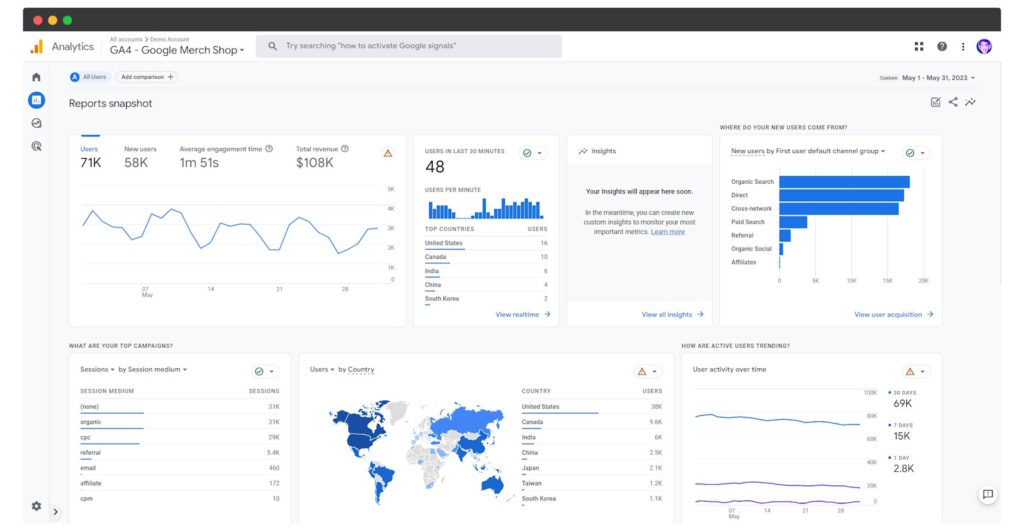
Uses: Google Analytics is a tool that helps businesses analyze important metrics like website traffic, page views, bounce rates, and conversion rates. It provides detailed information about traffic sources, user demographics, and behavior, which helps businesses understand their audience better. With customizable dashboards and real-time tracking, businesses can generate comprehensive reports.
Drawbacks: While Google Analytics offers a wealth of data and insights, it can sometimes be overwhelming for beginners due to its complex interface and many features. Another drawback is that Google Analytics relies on cookies to track user behavior, which may not capture data accurately in certain scenarios, such as users with ad-blockers or those who disable cookies.
Pricing: free for small and medium-sized businesses. For larger enterprises or businesses with advanced needs, Google Analytics 360 (formerly known as Google Analytics Premium) is available, which offers additional features and support. Pricing for Google Analytics 360 is based on an enterprise agreement and varies depending on business requirements.
2. Hotjar
Hotjar is an effective tool for analyzing user behavior on your website. Through its features, such as heatmaps, visitor recordings, surveys, and user feedback, it provides valuable insights that help businesses improve their website to increase conversions.
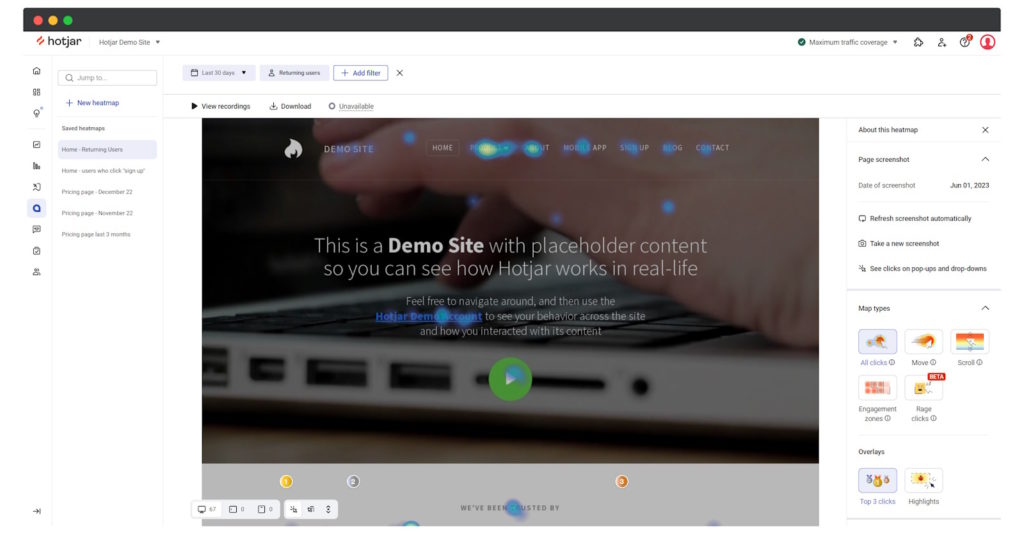
Uses: Hotjar allows businesses to visualize user behavior through heatmaps, highlighting areas of high engagement, clicks, and scrolling patterns. Visitor recordings allow businesses to replay individual user sessions and gain deeper insights into their website experience. Surveys and user feedback tools provide opportunities for businesses to gather qualitative insights and understand user preferences, pain points, and suggestions. By leveraging Hotjar, eCommerce businesses can identify usability issues, optimize website layouts, improve the user experience, and boost conversions.
Drawbacks: One drawback of Hotjar is that the free plan limits the number of recordings, heatmaps, and surveys available. To access additional features and higher usage limits, businesses must upgrade to one of Hotjar's paid plans. Additionally, while Hotjar provides valuable behavioral insights, it may not offer the same depth of quantitative data and advanced analytics features as some other tools.
Pricing: free and paid plans. The free plan has limited features and allows up to 35 sessions per day. Paid plans start at $39 per month and offer more pageview limits and additional features like advanced reporting and user feedback.
3. Optimizely
Optimizely is an experimentation platform that allows eCommerce businesses to conduct A/B testing, multivariate testing, and personalization campaigns. It helps companies to optimize their websites and user experiences through data-driven experiments and targeted content variations.
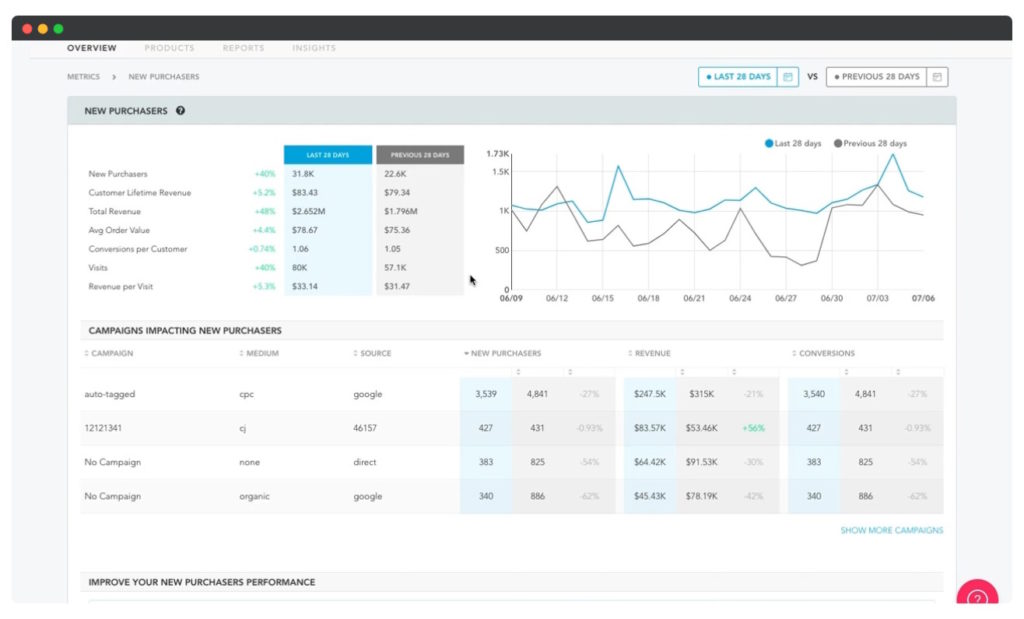
Uses: Optimizely helps businesses test different versions of their website pages, layouts, content, and features. This lets them understand which variations result in better user engagement and conversions. By conducting A/B and multivariate tests, businesses can make informed decisions about design changes, product offerings, and marketing strategies. Optimizely also provides personalization capabilities, which enable businesses to create customized experiences for specific customer segments based on their behavior, preferences, and demographics.
Drawbacks: Although Optimizely offers a variety of experimentation and personalization features, it can be challenging to set up and manage experiments without technical knowledge or assistance from development teams. Additionally, for smaller eCommerce businesses, the pricing may be considered high.
Pricing: paid only. Optimizely only offers paid pricing plans customized to meet businesses' unique needs. They do not provide specific plan prices, but generally, there is a base fee that includes core features, with additional costs based on factors like the number of experiments, monthly visitors, and personalization requirements.
4. Supermetrics
Supermetrics is a data integration and reporting tool that helps eCommerce businesses gather data from various sources and create comprehensive reports. It lets companies connect and consolidate data from different platforms, such as Google Analytics, social media channels, advertising platforms, and more, into one centralized location.
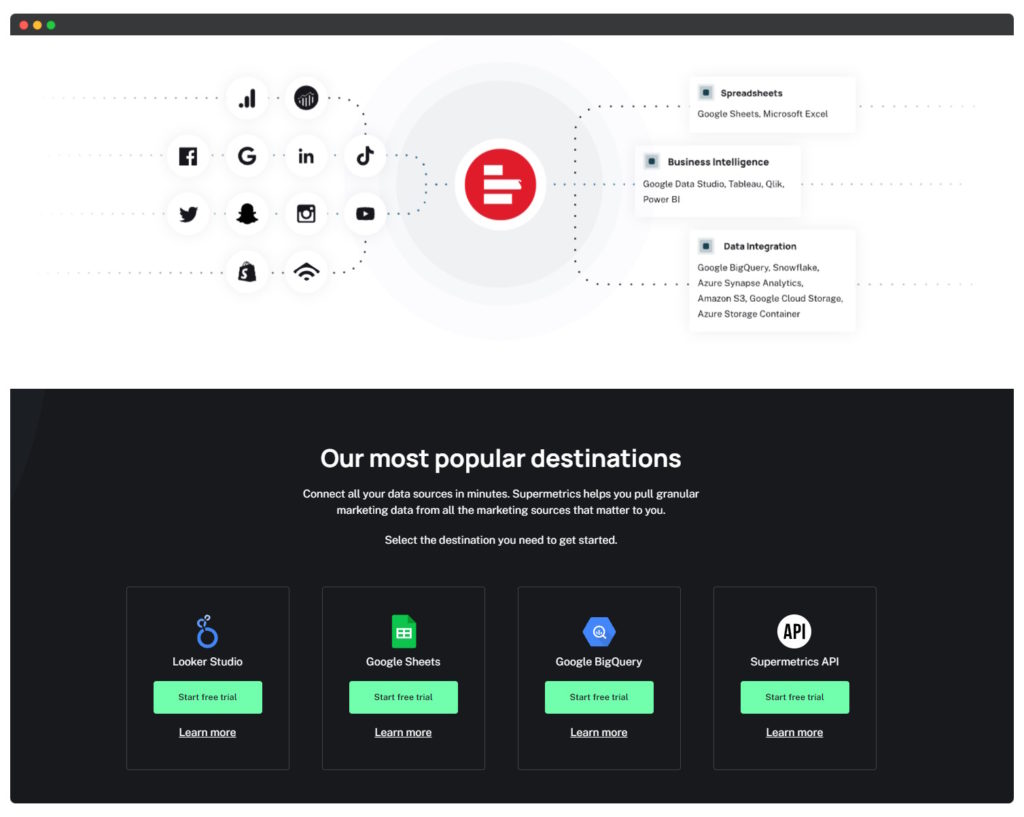
Uses: Supermetrics enables businesses to automate data retrieval and reporting processes by pulling data from multiple sources into popular analytics and reporting platforms like Google Sheets, Excel, and Google Data Studio. With Supermetrics, businesses can create custom reports, analyze cross-channel performance, and gain valuable insights into their marketing campaigns, website traffic, and customer behavior. The tool saves time and effort by eliminating the need for manual data extraction and consolidation.
Drawbacks: One drawback of Supermetrics is that it requires some technical knowledge to set up and configure data connections initially. Additionally, while Supermetrics offers a wide range of data connectors, some specific integrations may not be available, depending on the platforms and sources businesses require.
Pricing: paid only. Supermetrics offers different pricing plans based on the specific needs of businesses. Pricing varies depending on factors such as the number of data sources, volumes, and the reporting platform used.
5. Glew.io
Glew.io is a comprehensive eCommerce analytics and business intelligence platform that helps businesses gather, analyze, and visualize their data to gain actionable insights. It integrates with popular eCommerce platforms and marketing channels to provide a holistic view of the business's performance, customer behavior, and marketing campaigns.
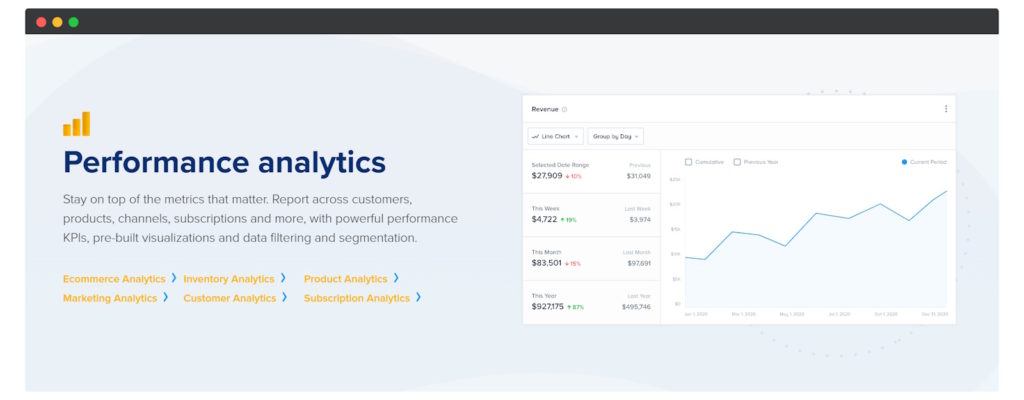
Uses: Glew.io allows businesses to consolidate data from various sources, including eCommerce platforms like Magento, Shopify, and WooCommerce, as well as advertising platforms, email marketing tools, and more. It provides detailed reports and dashboards that cover essential metrics such as sales, customer lifetime value, product performance, and customer segmentation. Glew.io also offers advanced analytics features, including cohort analysis, customer retention analysis, and predictive analytics, to help businesses optimize their marketing strategies and drive growth.
Drawbacks: One drawback of Glew.io is that while it offers a wide range of features and data integrations, businesses with complex data requirements may need additional customization or integration support. Additionally, the learning curve for using Glew.io effectively may be steep for users new to analytics and visualization tools.
Pricing: paid only. Glew.io offers different pricing plans based on business size and needs, starting from $20 per month. The pricing is based on the number of orders, website traffic, and integrations required.
6. Kissmetrics
Kissmetrics is a customer analytics platform that tracks and analyzes individual user behavior to help eCommerce businesses understand their customers' journeys, optimize conversions, and drive growth. By analyzing user interactions across various channels, companies can gain valuable insights and use data to make informed decisions that enhance the personalization of user experiences.
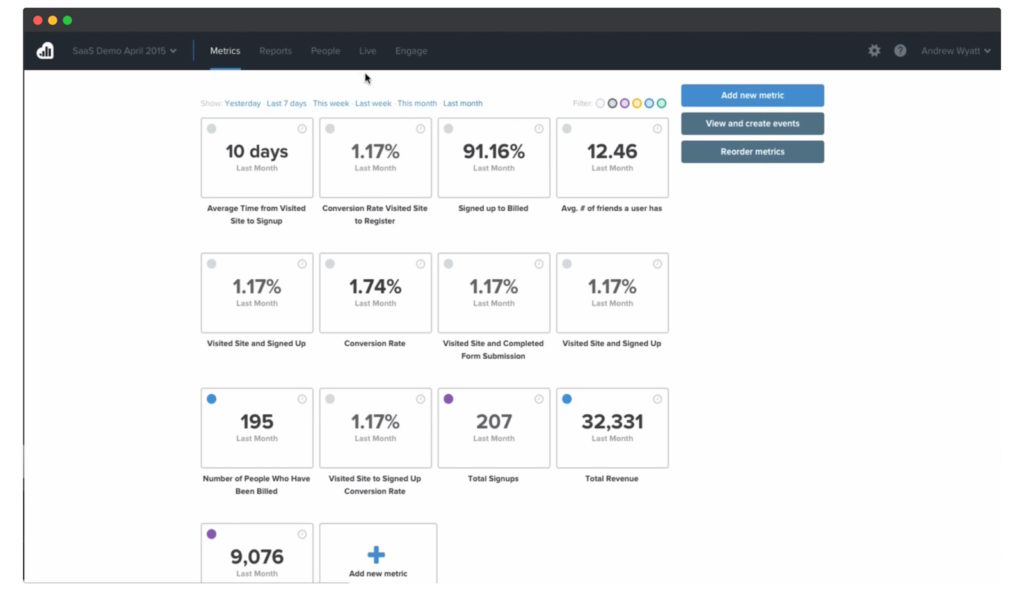
Uses: Kissmetrics enables businesses to track and analyze customer behavior, such as website visits, product interactions, conversions, and retention. It offers cohort analysis, funnel tracking, and customer segmentation features to identify patterns, measure the effectiveness of marketing campaigns, and optimize customer journeys. Kissmetrics also provides features for personalized email marketing and behavior-based engagement, allowing businesses to tailor their communication and offers to individual customers.
Drawbacks: while Kissmetrics provides robust customer analytics, it may not offer the same level of website performance tracking and traffic analysis as some dedicated web analytics tools.
Pricing: paid only, starting from $299 per month. At Kissmetrics, pricing is tailored to meet the unique needs of each business. Their plans take into account factors such as website traffic, data volume, and required features.
7. Crazy Egg
Crazy Egg is a powerful heatmapping and user behavior analytics tool that helps eCommerce businesses visualize and understand how visitors interact with their website. It visualizes user engagement, clicks, and scrolling patterns to optimize website design, layout, and content for better conversions.
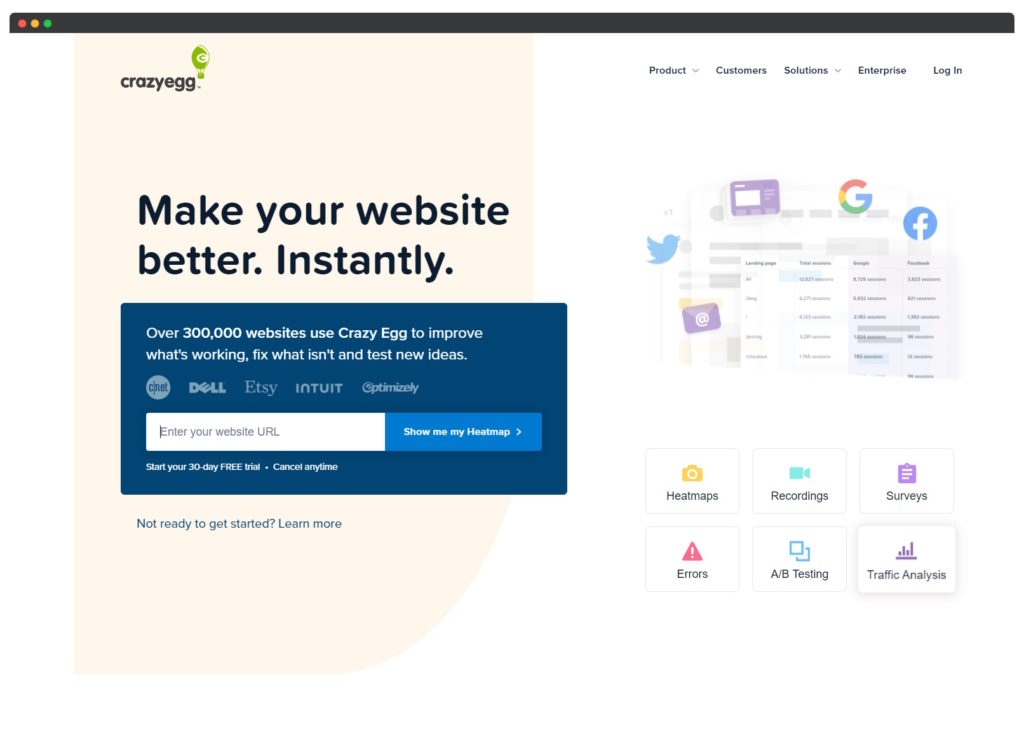
Uses: Crazy Egg's heatmaps allow businesses to see which website areas receive the most attention, where users click, and how far they scroll on specific pages. This data helps companies to identify areas of high engagement and areas that may need improvement. Crazy Egg also offers features such as A/B testing, session recordings, and user feedback tools to gather insights and make data-driven decisions for website optimization.
Drawbacks: One drawback of Crazy Egg is that it primarily focuses on visual representations of user behavior, which may not provide the same depth of quantitative data as other analytics tools.
Pricing: paid only, starting from $29/month. Crazy Egg offers different pricing plans based on the number of pageviews per month.
8. Woopra
Woopra is a customer journey analytics platform that provides real-time, cross-channel data to help eCommerce businesses understand and optimize the entire customer lifecycle. It offers comprehensive insights into customer behavior, engagement, and conversion paths across different touchpoints.
Uses: Woopra lets businesses track and analyze customer interactions across multiple channels, including websites, mobile apps, email, and more. It provides detailed profiles for individual customers, tracking their actions, preferences, and engagement history. Woopra's analytics capabilities help businesses understand customer journeys, identify bottlenecks, and optimize marketing strategies to drive conversions and increase customer retention.
Drawbacks: One drawback of Woopra is that the learning curve can be steep for users who are new to analytics and data visualization tools. Some users point out that the interface is not set up well for analysis and has bugs. For example, it is sometimes difficult to filter some actions or groups of actions or combine filters.
Pricing: free and paid plans. Woopra provides both standard and enterprise plans, with pricing tailored to individual business requirements.
9. Matomo
Matomo (formerly Piwik) is a robust open-source web analytics platform that allows eCommerce businesses to track and analyze website traffic, user behavior, and conversions. It provides valuable insights into visitor engagement, sources of traffic, and the effectiveness of marketing campaigns.
Uses: Matomo offers various analytics features, including page views, visitor profiles, goal tracking, and more. It allows businesses to gain a deeper understanding of their website visitors, identify popular content, track conversion funnels, and measure the impact of marketing activities. Matomo also offers data privacy features, allowing businesses to have full control over their data and comply with privacy regulations.
Drawbacks: Being an open-source platform, it may require more technical expertise for installation, customization, and ongoing maintenance compared to some other analytics tools. Additionally, while Matomo provides extensive features, the availability of certain advanced features and integrations may depend on the specific version of Matomo being used.
Pricing: Matomo offers a flexible pricing structure. There is a free self-hosted version that allows businesses to install and use Matomo on their own servers. They also offer cloud-hosted plans with different pricing tiers based on website traffic and additional features.
10. OWOX
OWOX is a comprehensive analytics platform specifically designed for eCommerce businesses. It offers advanced analytics solutions to help companies to collect, process, and analyze data from various sources, enabling them to gain actionable insights.
Uses: OWOX provides a range of analytics capabilities, including data integration, attribution modeling, and data-driven marketing automation. It allows businesses to combine data from multiple sources, such as website analytics, advertising platforms, and CRM systems, to get a holistic view of their marketing performance and customer behavior. OWOX's attribution modeling helps businesses understand the impact of different marketing channels and campaigns on conversions, while its marketing automation features enable personalized and targeted marketing efforts based on customer insights.
Drawbacks: While OWOX offers powerful analytics solutions, businesses with limited data volumes or less complex analytics needs may find some of its features to be more advanced than necessary.
Pricing: OWOX offers pricing based on individual business requirements. The pricing structure considers factors such as data volume, integration complexity, and specific features required.
Final Words
Every eCommerce business has unique needs when it comes to monitoring its KPIs. Although the eCommerce analytics tools mentioned are not comprehensive, they can provide insight into the metrics you want to track and the tools you want to use.
